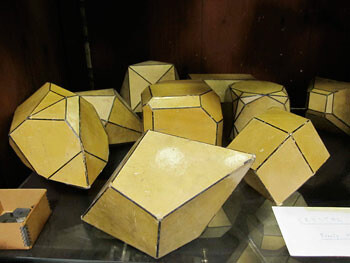February 1, 2010
University of Edinburgh
http://www.eca.ac.uk
Curated by Clémentine Deliss, Future Academy & Randolph CliffWith Bruce Altshuler (Director, Museum Studies, NYU); Charles Asprey (Randolph Cliff); Iain Boyd-Whyte (Architectural Historian, University of Edinburgh); David Bussel (Curator, Consultant in Theory, Edinburgh College of Art); Mungo Campbell (Hunterian Museum and Art Gallery, Glasgow); Angela Dimitrakaki (Lecturer in Modern/Contemporary Art, University of Edinburgh); Martin Hammer (Head of Department of History of Art, University of Edinburgh); Simon Grant (Editor of TATE etc., Randolph Cliff); Simon Groom (Director of Modern and Contemporary Art, National Galleries of Scotland); Alan Johnston (Artist, Professor, Edinburgh College of Art); Henrietta Lidchi (Department of World Cultures, National Museums of Scotland); Steven Henry Madoff (Curator, Writer, Senior Critic Yale School of Art); Adrien Sina (Artist, Curator); Hamza Walker (Director of Education, Associate Director, Renaissance Society, Chicago); Richard Williams (Director, Arts, Culture, Environment Graduate School, University of Edinburgh); Sarah Wilson (Reader in Contemporary Art, Courtauld Institute of Art) and guests.
Future Collections questions the physical and conceptual shape that future research collections might take, and how their presence might trigger experimental developments in the arts and humanities. This international think-tank is the latest chapter of Future Academy at Edinburgh College of Art and is linked to the artist-in-residency program Randolph Cliff, supported by the College of Art, the National Galleries, the University, and patron Charles Asprey. Since 2007, leading artists have stayed at Randolph Cliff – an early 19th century tenement in Edinburgh’s New Town – for a period of downtime beyond the constraints of exhibitions, art fairs, or teaching. As a result, new ideas have emerged within the context of Edinburgh. Each guest artist has donated a blueprint or a physical trace of his or her emergent inquiry, potentially constitutive of a future research collection for art students. Ei Arakawa, Anna Barriball, Marc Camille Chaimowicz, Christian Flamm, Zvi Goldstein, Franz Graf, Joseph Kosuth, Mark Leckey, Manfred Pernice, David Schutter, Dexter Sinister, Frances Stark, and Thomas Struth are some of the artists who have visited Randolph Cliff over the last three years and contributed to this investigation.
In the late nineteenth and early twentieth centuries, numerous art educational and university institutions were built around the donations of works by artists and their patrons – collections that constituted the intellectual capital of new institutes or departments of research. Today, very few art colleges or university galleries are consistently replenished by current art production or ideational blueprints. To investigate the research collection today, as opposed to its museological counterpart, is to reveal the ways in which artists and scholars engage with other disciplines, cultures, materials, images, and information networks. Indeed, the global diversity of contemporary art practice compels us to imagine a similarly diversified future collection and, with it, an advanced museological modus operandi. If past research collections were built on physical objects of various kinds, can we imagine a less material-based collection, one that takes its cue from art practice today and gathers together conceptual prototypes of research and production?
The one-day workshop, held in the historical Raeburn Room of the Old College at Edinburgh University, asks the following questions:
What inspired research collections in the past? How do we reinterpret them today? What insights do they provide into the intellectual, social, and ritual practices from the past? What modes of display are appropriate for these highly heterogeneous and often anachronistic collections? How can we defy the increasing standardization of research in contemporary art and retrieve the innovative even radical character of such collections? What type of curatorial approach would this require? Would it necessitate rooms, museological amenities, and an archival procedure, as we know it? What are the legal arguments that might be raised in relation to such a research collection in the 21st century? Can the future research collection be understood as a collective work of inquiry and communication between artists, collectors, scholars and students and thereby support the evolution of new approaches and institutional networks in the study of art, visual culture and the humanities?
http://www.eca.ac.uk/index.php?id=389
http://www.eca.ac.uk/index.php?id=895


